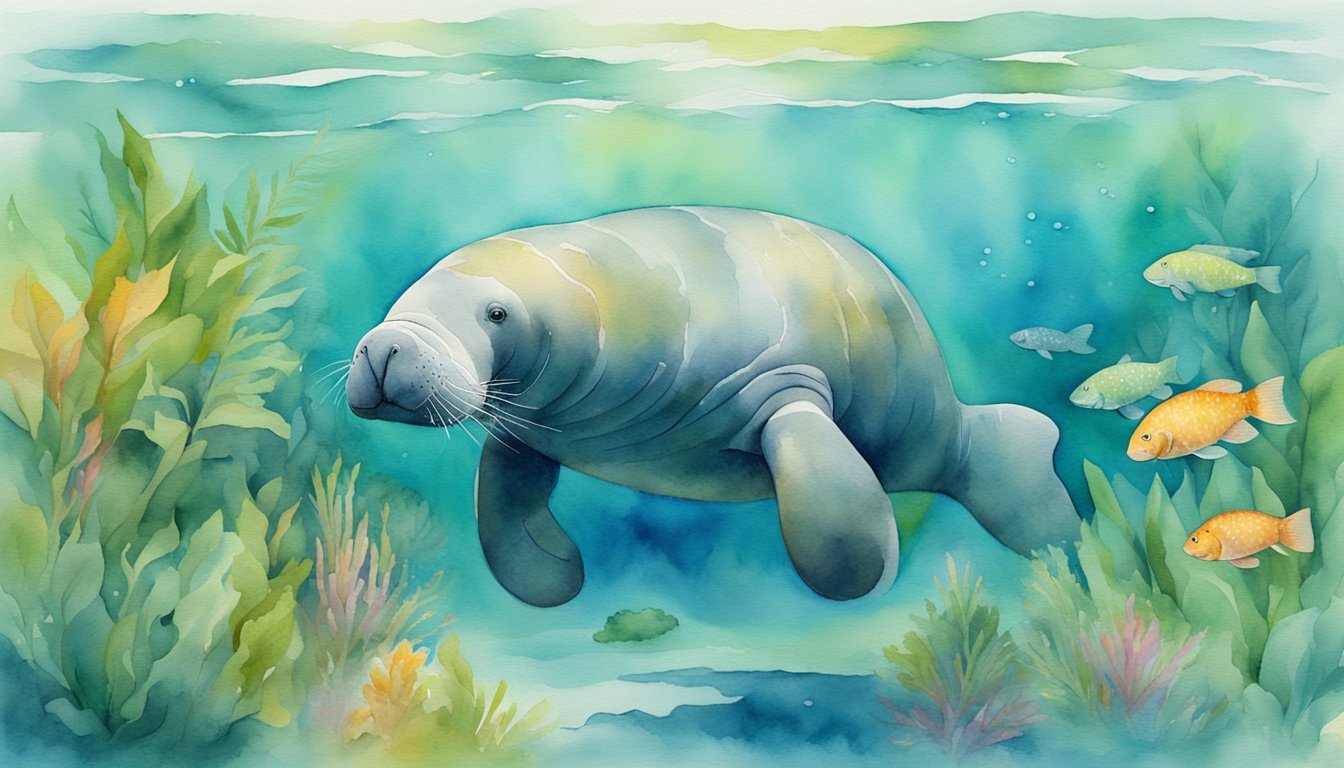Manatee Basics
Manatees are aquatic mammals known for their serene nature and large size. These gentle giants glide through warm coastal waters, rivers, and springs, feeding primarily on vegetation.
Classification and Species
Manatees belong to the order Sirenia and the family Trichechidae. The Trichechus genus includes the West Indian manatee (Trichechus manatus), the African manatee (Trichechus senegalensis), and the Amazonian manatee (Trichechus inunguis), each adapted to their unique environments in the Americas and Africa’s waterways.
- Order: Mammalia
- Class: Animalia
- Family: Trichechidae
- Genus: Trichechus
Physical Characteristics
The manatee’s body is streamlined for aquatic life, with a paddle-shaped tail and two forelimbs or flippers that aid in steering and crawling along the bottoms of waterways. Their skin is typically a gray color, and they have a sparse scattering of hairs. Manatees have no natural predators and rely on their large size for defense. Adult manatees typically weigh between 800 to 1,200 pounds.
- Size: Up to 13 feet long
- Weight: 800 – 1,200 pounds
- Distinguishing Features: Flat tail, flippers with nails
Manatees replace their teeth throughout their lives—a trait unique to the species—allowing them to feed on abrasive vegetation such as mangrove leaves and various trees lining the banks of rivers and shores. Their lungs are exceptionally long, aiding in buoyancy and allowing for extended periods underwater, which is essential for an animal that spends so much of its life submerged.
Manatee Ecology and Behavior

Manatees, often referred to as sea cows, showcase intriguing behaviors and ecological patterns. These aquatic mammals are unique, each species adapting to its specific habitat and lifestyle.
Habitat and Distribution
Manatees inhabit various water environments such as rivers, estuaries, and coastal marine areas. The West Indian manatee frequents the Florida waters, preferring warm shallow waters where seagrass beds are abundant. Their cousins, the Amazonian manatees, dwell in the freshwater of the Amazon River and its tributaries, while the West African manatees roam along the coast and rivers from Senegal to Angola. The habitat range for these gentle giants varies, with some seen as far north as Massachusetts in the summer, and as far west as Texas.
Diet and Feeding Patterns
Manatees are herbivores, relying heavily on an aquatic plant diet including seagrass, algae, and occasionally, mangrove leaves. They consume a large amount of vegetation daily to sustain their large size, with adults eating up to 10-15% of their body weight. These aquatic mammals play a critical role in their ecosystems as they help control the growth of seagrasses and algae.
Reproduction and Life Cycle
The life span of manatees can extend up to 40 years or more. They have a slow reproduction rate, with females generally giving birth to a single calf following a gestation period of about 12 months. Calves are born weighing between 60 and 70 pounds and can swim on their own shortly after birth. While mating can occur at any time of the year, there is a higher incidence of births during warmer months.
The ecology and behavior of manatees are closely tied to the health of their environments, with threats such as watercraft collisions, loss of habitat, and pollution presenting substantial challenges to their populations. Conservation efforts remain crucial for protecting these serene marine mammals across their global habitats.

